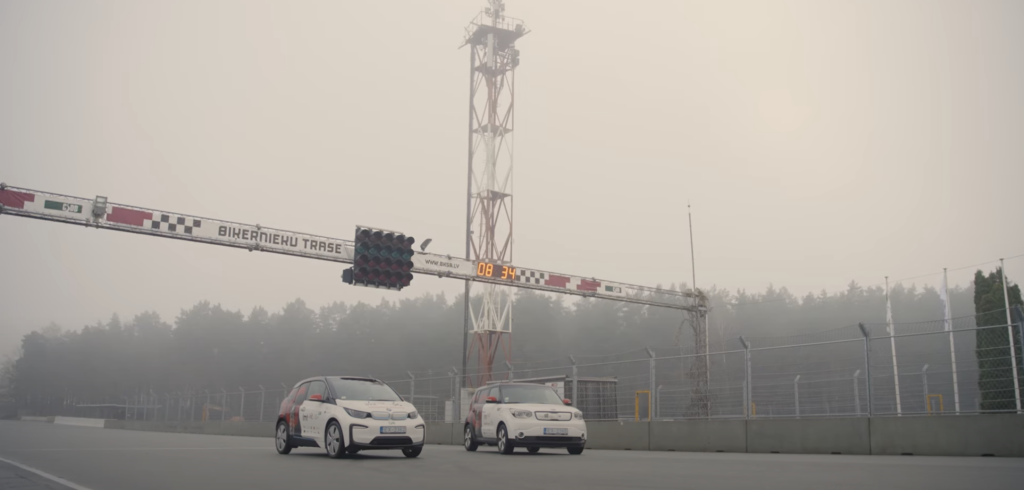The first use case demonstrations in the 5G-Routes project have been held at the 5G cross-border mobility testbed at the Bikernieki racetrack in Riga, Latvia. The testbed imitates cross-border connectivity, which is crucial for testing connected and automated mobility innovations before implementing them in Europe – a continent of many borders and mobile operators. In total, four cross-border use cases were demonstrated by several 5G-Routes project partners.
The Latvian Institute of Electronics and Computer Science showcased dynamic vehicle platooning – a scenario in which an autonomous vehicle copies the maneuvers performed by a manually controlled vehicle, using only vehicle data sent and received over a commercial 5G network.
The VEDECOM Institute for Energy Transition and Tallinn University of Technology (TTU) tested two interconnected use cases: vulnerable road user (VRU) collision avoidance and connected maintenance. In the demo, a pedestrian received alerts from a connected electric vehicle that had detected faults via sensors, warning the pedestrian of a potential collision and providing crucial seconds to remove themselves from danger. The VRU and the electric vehicle were each connected to a different mobile operator, testing the cross-border connectivity.
The fourth cross-border connectivity use case demonstrated multiuser gaming on the go hosted by Brainstorm. It showcased 5G non-standalone (NSA) network capabilities by testing multiplayer game play with gamers connected via 5G-enabled smartphones and laptops.
Latvia’s cross-border 5G mobility space was launched as a part of the 5G-Routes project – an EU-funded future mobility initiative to develop innovative and commercially exploitable CAM (connected and automated mobility) use cases and ensure cross-border automated mobility. The testbed has been developed by the Latvian mobile innovator LMT, in close collaboration with Estonia’s Telia.
“The biggest challenge in testing innovations over the 5G network in a cross-border setting is finding a safe environment that enables undisturbed testing in realistic conditions. Thus, a closed and safe cross-border testing space significantly alleviates this hurdle, facilitating testing on a wider scale and massively accelerating the development of innovative cross-border solutions in all industries, including smart mobility,” explained Artūrs Lindenbergs, mobility innovation lead at LMT.
The project consortium is preparing to test use cases at the Valka-Valga trial site on the Latvian-Estonian border, and at the Finnish-Estonian cross-border trial site between the Vuosaari and Muuga harbors. Use case testing in the 5G mobility testbed in Latvia was hosted by 5G-Routes consortium member LMT, which also coordinates the implementation of the 5G infrastructure across the 5G-Routes test sites in Latvia, Estonia and Finland in collaboration with project partners.


